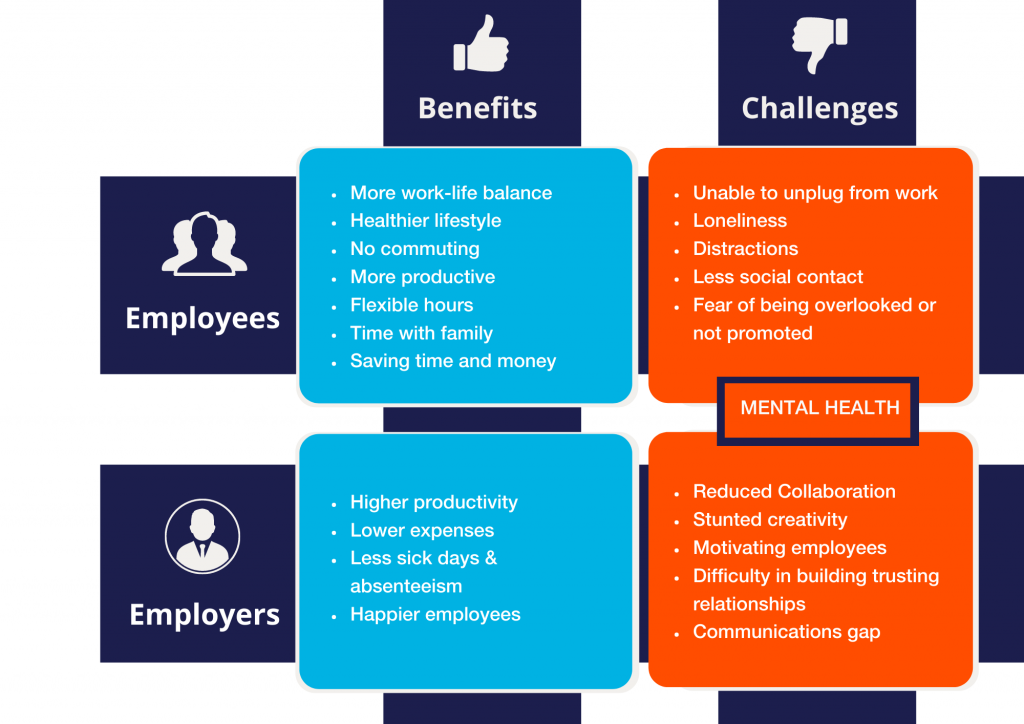The Highs and Lows of Working from Home
We take a look at the working from home statistics in Australia
As part of our Remote Working series, we have been looking at how companies responded to the pandemic by being forced to setup for remote working almost overnight and how to assess candidates to identify hires that will thrive in a remote working model.
In this article we will go through the key working from statistics, challenges and benefits, employer and employee preferences and provide some solutions you can implement to support your staff when remote working.
WORKING FROM HOME TODAY
According to the ABS, back in 2015, working from home even as a flexible work model represented just 13% of the Australian workforce. Now in 2021, 64% of employees working for a small or medium-sized business in Australia are working remotely, with 47% of employees only being introduced to the concept due to the pandemic (Capterra survey).
Working from home statistics are naturally much higher for businesses whose employees typically worked in offices, led by finance and insurance (58%), public administration (51%) and communications (47%) (Roy Morgan Research).
So, the stats are in and it’s safe to say that remote working is here to stay. The onus is now on HR managers to create an environment that accommodates and enables this new way of working.
BENEFITS AND CHALLENGES OF REMOTE WORKING
There are many pros and cons when it comes to WFH. Our research has found that the majority of employees prefers to work from home and 78% stated in a recent Capterra survey that they are more productive working from home. This is compounded in a November 2020 survey conducted by Hays, that looked at 2500 “working professionals” and uncovered that 61% believed hybrid working was the most productive model.
With remote working becoming the new norm after all, it has become the preference for many employees to log on from home or set up a hybrid agreement over traipsing into the office every day.
Hays’ research also discovered that 47% of employers were open to retaining working from home as part of their workplace mix. So, with remote working being the preference for employees and this being met by employers’ growing openness to accommodate this model, companies now need to think about how to hire for effective remote working.
You may also want to read our blog on hiring for remote working here.
The model may be employee preference but that doesn’t mean there aren’t any drawbacks. Our research reviewed the ups and downs associated with remote working discovered the benefits and challenges below.

THE EFFECTS OF WORKING FROM HOME
The Testgrid team are advocates of the well-being and nurturing of mental health. Putting the benefits of remote working aside, let’s not forget that Covid-19 has decimated peoples’ lives by taking loved ones and has forced people inside their own homes. There are many challenges people face in the workforce, from isolation to managing work while having to home school children.
Below are some of the key findings around mental health:
- 104% increase in employees seeking professional help for stress, anxiety and depression (Medikeeper)
- 28% increase in workers who have trouble sleeping (Medikeeper)
- Adults ages 18-24 are almost twice as likely as all adults to report new or increased substance use (25% vs. 13%) or recent suicidal thoughts (26% vs 11%);
- Cognitive functioning reduced, including fluid intelligence, working memory and cognitive control (Bogliacino et al., 2021).
Below are some keys stats from our research showing the steps employers are taking to manage mental health concerns:
- 51% provide, or plan to provide, manager training to recognize anxiety and depression and to understand available referral resources such as an EAP
- 85% have increased videoconferencing for work and non-work purposes
- 73% offer flexible work hours to accommodate work/home challenges
WHAT CAN MANAGERS DO?
Remote working is harder for some than other but ultimately regular contact and support helps people feel more included and engaged at work.
An article published by the Harvard Business Review, refers to a study into leadership behaviours where 44% of participants stated that being recognised and praised are the most common forms of how managers show appreciation.
Other acts included:
- Recognising a person’s work, dedication, effort, and contributions
- Acts of affirmation – saying thank you for a job well done or sending an email acknowledging their efforts
- Mentioning an employee’s accomplishments during team meetings
- Mentioning their work in conversations where managers are present
- Provide opportunities to work more closely with senior leadership
- Check in with staff from time to time
REMOTE WORK GAP ANALYSIS
If you are unsure about whether you are set up for remote working success, sing up below or contact our team at hello@testgrid.com for a free Remote Working Gap Analysis, where one of our specialists will analyse your development and recruitment frameworks, highlight gaps and advise you can hire and development staff into efficient remote workers.

